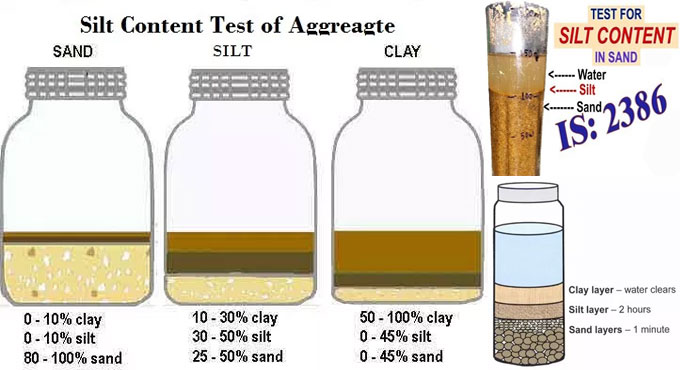
Method of silt content test

Sand is considered as one of the vital construction materials for concrete, plastering, brickwork and flooring. Therefore, it is always recommended to use standard quality sand in the construction works.
To check the quality of sand, silt content test should be conducted. Silt content stands for a fine material that is lower than 150 micron. It becomes unstable in the existence of water.
When silty sand is applied for bonding, the strength will be decreased and rework should be required. It is mostly found when the plastering is going on for roof where the plaster continuously peels off at the time of being plastered with the mortar.
Extreme quantity of silt decreases the bonding of cement and fine aggregates as well as hampers the strength and stability of work.
In the job site, it is required to carry out silt test for each 20 Cum of sand although it may differ.
Silt Content Test for Sand
Purpose: Determine the silt content in sand (fine aggregate).
Necessary Tools:
? 250 ml measuring cylinder
? Water
? Sand & Tray
Test Method:
? Initially, the measuring cylinder should be filled with 1% solution of salt and water up to 50 ml.
? Include sand to it unless the level goes to 100 ml. Then fill the solution up to 150 ml level.
? Cover the cylinder and shake it properly.
? Once 3 hours are completed, the silt content settled down over the sand layer.
? Now record the individual volume of silt layer as V1 ml (settled over the sand).
? Then record the sand volume (underneath the silt) as V2 ml.
? Apply the method twice to obtain the average value.
? Silt Content = V1 / V2 x 100
The allowable silt content in sand percentage should be only 6%.


